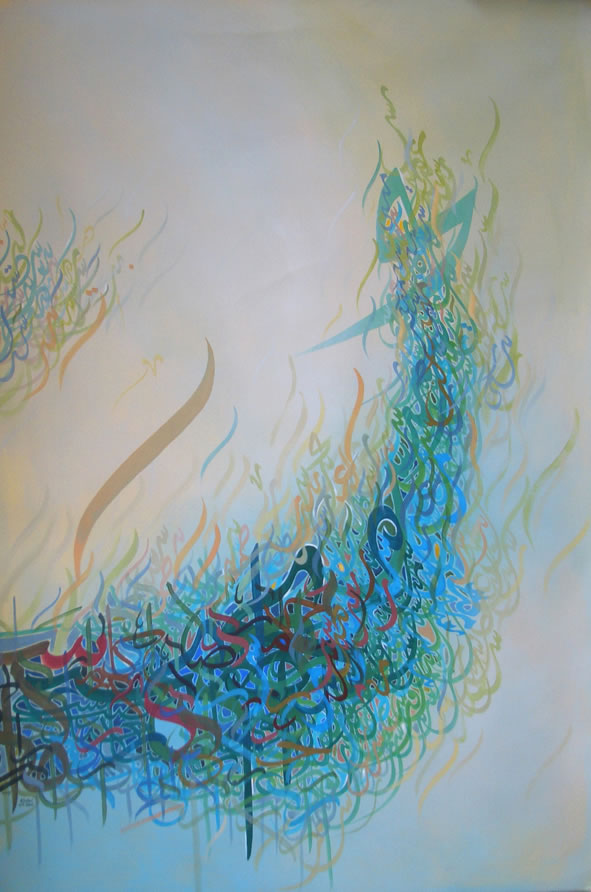Khaled Al Saai was born in Syria in 1970. He grew up in a household surrounded by painting, music and calligraphy. By the age of eighteen he had already established a reputation as a calligrapher. He graduated from the University of Damascus in 1998 with his MA in Fine Art, and went on to become an internationally recognized master of Arabic calligraphy. He has participated in many international art competitions and held solo exhibitions throughout Europe and several Middle Eastern countries. In 1997, at the first International festival of Calligraphy, Teheran, Iran, he was nominated one of the best ten international calligraphers. He then went on to obtain a certificate of distinction at the festival of music, poetry and calligraphy, Oberani, France. In 2001, he obtained the Diwani Jali style prize at the Fifth International competition of Arabic calligraphy, Istanbul, Turkey. In 2002, he went on to teach “Introduction to Arabic Calligraphy” at the University of Michigan, USA. He has conducted workshops and exhibitions in Chicago and Boston.
Al Saai works in an astonishing range of styles, from decorous classical modes, which he often uses for quotations from poetry, to radically inventive compositions, in which lettering is fragmented into fantastical, almost pictorial compositions. The breathtaking beauty of his work makes it immediately accessible to all.
 |
|
The Thulth style of calligraphy is the strongest of the Arabic calligraphy styes, created during the Abbasid period in the 9th century in Baghdad. Most of the letters in this style are the shape of a triangle at the top and the vowels are added as decoration.
The name Galaxy was given to this painting because of the light in the painting and the movement of letters. |
| |
|
|
 |
|
The Diwany Jalii and the Thulth styles are the most decorative. They are influenced by three Islamic schools of calligraphy (Arabic, Persian and Ottoman). Diwany evolved during the Ottoman Era (1670 to 1700).
The style was used to write official documents of the Sultan to other kings. It conveyed the artistic standards of the Empire at that time. Usually, the text would be written in three different thicknesses of pen.
Nostalgia has the upward direction of the letters, akin to a peacock, the bird which in Islam and mythology represented the witness of Paradise. |
|